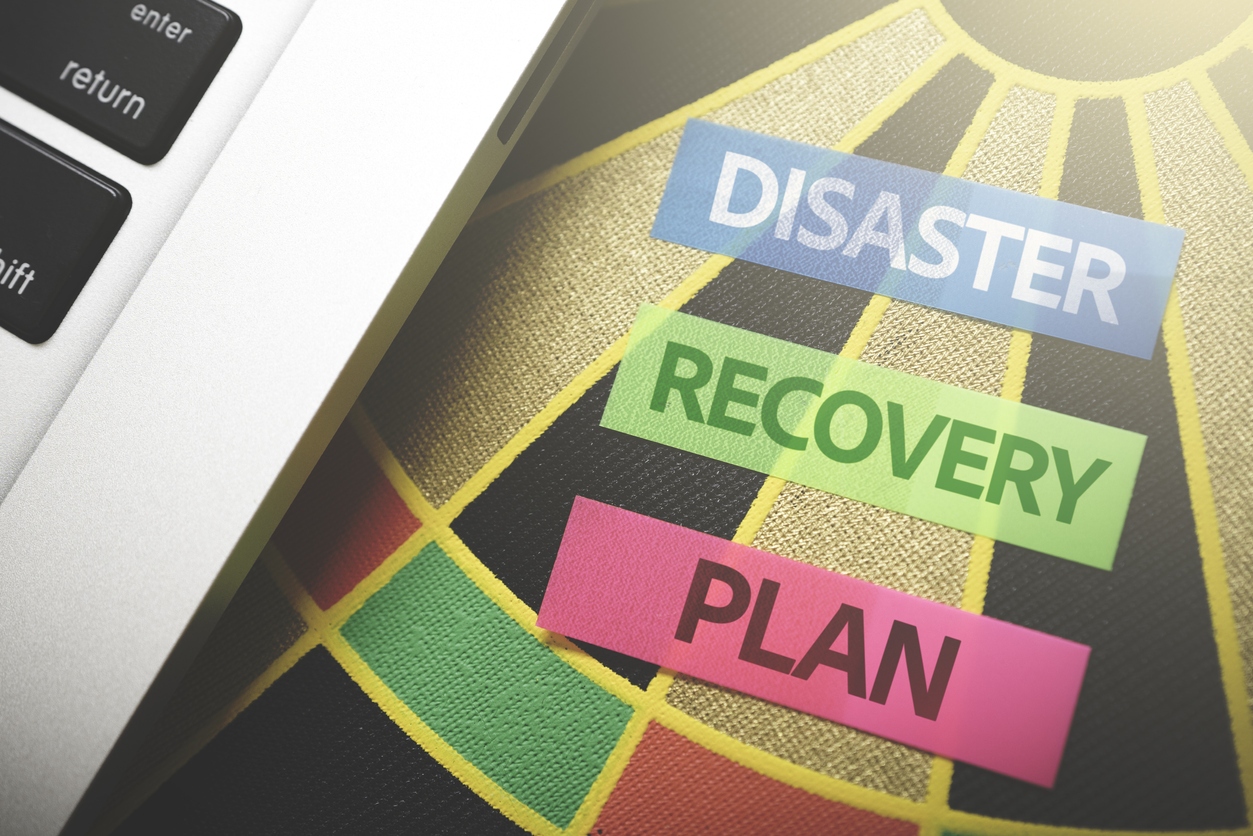It is hard to imagine a business today that does not rely upon Information Technology (IT) systems. Even if a company only uses email and some files in a folder, losing access to these systems or the data stored within them could be critical for the organization. At Keystone, we serve small to medium-sized businesses, and every one of our clients has at least three essential systems: email, document files, and financial or ERP data. Most also have several key applications, which may be housed on local systems, private clouds hosted by Keystone, or public clouds like Microsoft O365 and SalesForce.com.

Over the next few blog articles, we want to inform you about IT Disaster Recovery plans, essential technologies, potential pitfalls, and other helpful information.
Who Needs an Information Technology Disaster Recovery Plan?
There are two groups that should be concerned with this: business leadership focused on the long-term success of the organization, and internal IT leaders and engineers who need to manage these systems or oversee those who do.
Why Do I Need an IT Disaster Recovery Plan?
This is really a question of the impact of losing systems or data. A business leader is concerned with the losses involved in a disaster. This can be roughly measured. Just add the following:
- The cost to continue operations manually, with no systems support (if that is even possible). This would be a factor of employee or contracted labor costs multiplied by the number of hours to do the operation without systems and the cost per hour for each resource.
- The lost revenue due to canceled orders.
- The cost of discounts in an attempt to satisfy unhappy customers.
- Long-term lost revenue due to customers leaving and never coming back.
- The cost of any temporary IT measures (leasing equipment, added IT engineer labor costs at emergency rates, etc.).
- The cost of lost raw or finished goods due to expiration.
- The cost to enter or re-enter data when (and if) systems are restored.
- Higher employee turnover due to longer hours and more work.
- The lost goodwill value of the business due to a damaged market reputation.
Generally, you cannot assume your insurance policy will cover all of these costs. In fact, like most insurance, your costs may increase as a result of a claim. Some of these costs are almost impossible to estimate.
These are all the costs and losses you will likely encounter, but the real issue the survivability of the organization. A FEMA study showed that 40-60% of businesses that lose their data will never recover and will shut down. This is because of the inherent value of the systems and data, and the inability to compete without them.
What Is an IT Disaster Recovery Plan?
An Information Technology Disaster Recovery Plan (IT DRP) is a formal plan to largely do two things: avoid losses through protective measures and respond when production systems are lost. In the first case, your IT team will review all systems for vulnerabilities and monitor them for issues that may cause downtime. Examples of these issues include security breaches, equipment failure, and facility or geographical disasters. In the second case, should one of the issues occur, there must be a written, tested plan that can be enacted to quickly restore operations.
You may think that the chance of a hurricane, tornado, fire, etc. are so low that planning for those risks isn’t necessary. However, most IT DRPs are activated due to more common events like hardware failures (45%), security breaches, extended local power outages, internet outages, or personnel errors.
The IT Disaster Recovery Plan falls under the category of System and Organization Control (SOC) analysis, with a defined, written plan to account for every system and its business function, owners, backup processes, a communications plan, a key contact list, and more.
The plan should consider the types of disasters that could occur; for example, a loss of the server room due to fire would require a different response than data being encrypted in a cybersecurity attack.
This plan must be reviewed regularly and updated with each significant system change.
When you consider the variance in all the factors, you must conclude there is no one-size-fits-all IT Disaster Recovery Plan. The structure or heading of the plan may be similar, but the content must reflect your organization, and be kept up to date as it changes.
Finally, the IT DRP is part of a broader Business Continuity plan, which may encompass elements like facilities, employee assistance, shifting operations to third parties, inventory replenishment, and communication with vendors and customers.
Why Choose Keystone Technology Consultants for IT Disaster Recovery and Backup
At Keystone Technology Consultants, we take a proactive approach to your IT security, offering comprehensive disaster recovery and backup solutions to safeguard your critical data. If an unforeseen disaster occurs, our team quickly steps in to minimize downtime and restore operations, ensuring that your business continues to run smoothly.
Our disaster recovery and backup services protect your data from a range of threats, including power disruptions, cyberattacks, and even physical damage like fires or vandalism. We start with a thorough risk assessment to understand your business needs and IT goals. From there, we host your backups in a highly secure, Level 3 data center with built-in redundancy to ensure continuous availability. Even if one part of your infrastructure fails, our multiple layers of protection keep your data safe.
Our experts create a formal disaster recovery plan tailored to your business, backed by 24/7 support and continuously upgraded equipment. With our services, you can trust that your data is protected and recovery is swift, no matter what challenges arise. Contact Keystone Technology Consultants today to ensure your business is protected with a customized IT disaster recovery and backup plan.




